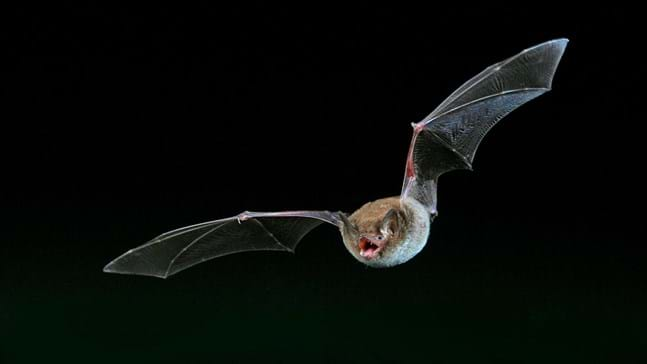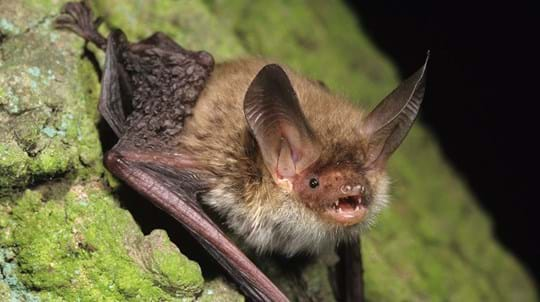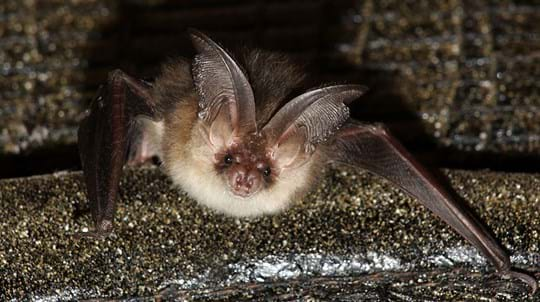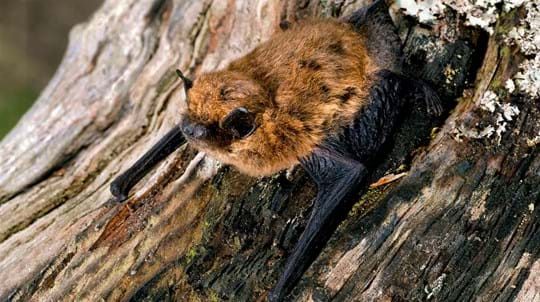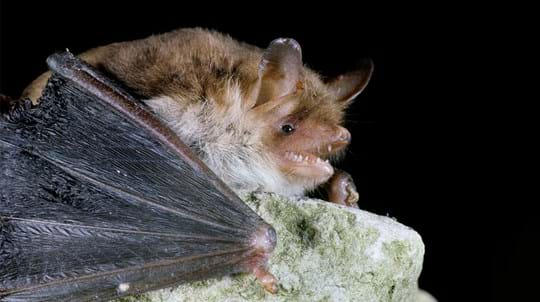
Credit: Stephen Dalton / Alamy Stock Photo
What do Daubenton's bats eat?
Flies, midges and caddisflies are the species’ main prey. They hunt these insects by flying low over water and catching them in their mouths or scooping them up with their tails. Prey is often eaten on the wing, but may be taken to a perch if particularly large.










